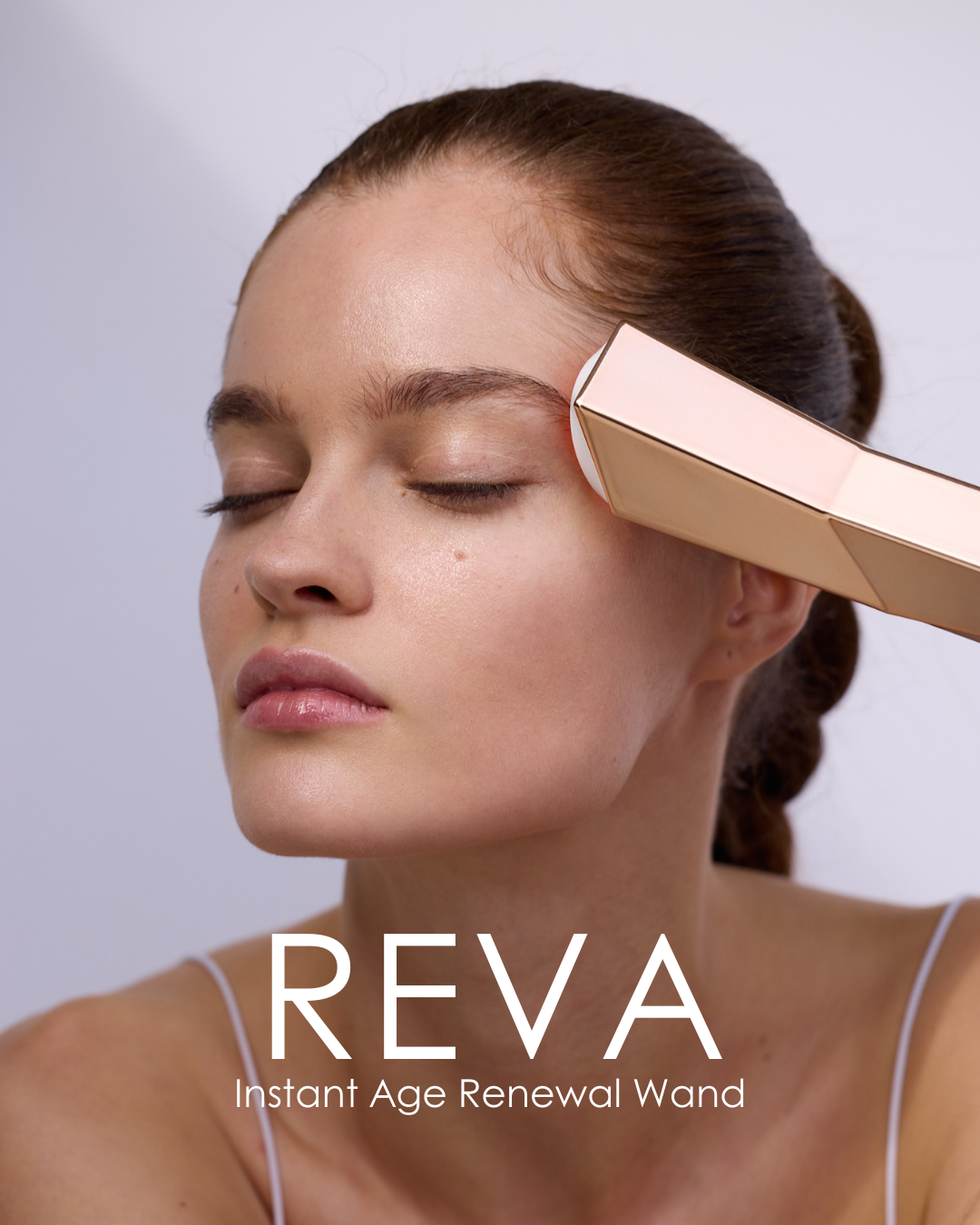
Laser vs LED Light Therapy: Everything You Need to Know
IN THIS ARTICLE:
- 02 What is Red LED Light Therapy?
- 03 What is Laser Light Therapy?
- 04 What are the Benefits of Laser Light Therapy?
- 05 What is the Difference Between Laser and Light Treatments?
- 06 Is LED or Laser Better?
- 07 Can You Perform LED Light Therapy At-Home?
- 08 Can You Perform Laser Light Therapy From Home?
- 09 The Takeaway: What is the Difference Between LED Light Therapy and Laser Therapy?
5-minute read
Key takeaways
- Lasers and LEDs are both mechanisms for delivering red light wavelengths to the skin
- Lasers are narrower, penetrate deeper and offer a more concentrated treatments
- LEDs offer a broader treatment, are safer for home use and are the preferred treatment for anti-aging and collagen production
The future of skincare is bright, literally. Light-based therapies have taken the skincare and beauty industries by storm, offering researched-backed solutions to many of our skin woes. The treatment options available to restore youthful radiance appear never-ending. But one thing is clear: light is an anti-aging ally. Research strongly indicates that targeted light therapies stimulate collagen production, reduce inflammation, and accelerate skin healing. We’re curious to delve into the transformative power of light, so we’re shining the spotlight on two trending treatments: laser light therapy and LED.
What is Light-Based Therapy?
Light-Based Therapy is the use of light energy to trigger changes in skin cells, to promote healing and regeneration, build new collagen stores or eliminate enduring blemishes such as scars, stretch marks, sun damage or dark spots. It can be delivered through lasers in a single concentrated wavelength, or LEDs that produce a spectrum of varying wavelengths to treat larger areas.
What is Red LED Light Therapy?

Red light therapy is the most popular LED wavelength, it is also referred to as low-level light therapy (LLLT) or photobiomodulation. Photobiomodulation covers more than just the red light wavelength and other wavelengths such as infrared light and blue light therapy are popular in cosmetic dermatology. Each wavelength represents a unique benefit for the skin. Infrared light (850nm) penetrates deep into the skin and even reaches surrounding tissue, bones, nerves, and joints to boost collagen and rejuvenate cells. Red light therapy (600-700nm) is a powerful anti-ager, it boosts cell renewal triggering the production of key structural proteins such as collagen, elastin, and hyaluronic acid. Blue light (460nm) treats the epidermal skin layer to eliminate acne-causing bacteria and reduce inflammation.
What is Laser Light Therapy?
Laser light therapy is a technique typically delivered under professional supervision. Lasers emit high energy, coherent (or single) concentrated beams of light to treat a specific concern such as scar tissue, dark spots, or tattoo removal. The light beam travels deep into the skin causing changed to skin such as collagen regeneration. Laser can be beamed or pulsed and often clients require several sessions to achieve desired results. Laser light therapy has a wide range of applications and can be used for anything from hair removal to tattoo removal, improving nerve function, and more. For specific skin concerns, laser light beams pinpoint a specific area or problem such as a scar, hyperpigmentation, or other sun damage.
What are the Benefits of Laser Light Therapy?
- Produces ATP to rebuild collagen
- Smooth fine lines
- Pain relief
- Inflammation
- Treats scarring and other blemishes
- Improved vascular activity
Laser vs LED Light Therapy?
The main difference between laser and light treatments lies in the nature of the light source and the way it interacts with the body.
|
Laser Light Therapy |
Light Treatments |
|
|
Light distribution |
Highly focused, coherent, and monochromatic (single wavelength) light source |
Broader spectrum, non-coherent light sources, such as lamps, LEDs, or filtered broadband light |
|
Coverage |
Emit light through a process called stimulated emission, which produces a highly concentrated, directional beam of light |
Less concentrated and more diffuse compared to lasers |
|
Intensity |
Highly energetic and can be used for precise, targeted treatments, such as cutting, ablating, or vaporizing tissue |
Generally lower in intensity and are used for therapeutic purposes, such as phototherapy, photobiomodulation, or light-based skin treatments |
|
Applications |
Often used for procedures like hair removal, tattoo removal, skin resurfacing, and certain surgical applications |
Examples of light treatments include red light therapy, blue light therapy, and intense pulsed light (IPL) treatments |
Is LED or Laser Better?

There is no simple answer as it depends on the specific application and desired outcome. Both modalities have their unique advantages and disadvantages for skin rejuvenation. Red light therapy is a longer-term solution to boosting skin health and slowing down the aging process, it requires multiple sessions so at-home LED devices are a better option for achieving and maintaining results. LED does not heat or cause thermal skin damage and so can be safely carried out from home.

Can You Perform LED Light Therapy At-Home?
Yes, it is possible to perform LED light therapy at home. In recent years, there has been a growing availability of affordable, consumer-grade LED light therapy devices that allow people to administer this type of treatment in the comfort of their own homes.
At-home LED light therapy devices typically come in the form of handheld devices, wands, or panels that can be placed directly on the skin. The wavelengths used in at-home LED devices are typically in the 600-850 nanometer range, a similar spec to professional-grade LED light therapy treatments. However, the light intensity is generally lower compared to clinical-grade devices.
Looking for your first LED light therapy mask? Check out these best-selling masks from Project E Beauty.
Can You Perform Laser Light Therapy From Home?
No, it is not recommended to perform laser light therapy at home.
Lasers emit highly concentrated, coherent light that can be dangerous if not handled properly. Improper use or exposure to laser light can cause eye damage, skin burns, and other serious injuries.
Laser light therapy is often used for specific, targeted treatments, such as pain management, wound healing, or skin rejuvenation. Accurately directing the laser beam to the correct area of the body requires specialized training and equipment that is not typically available in a home setting.
LumaLux Face | Pro LED Light Therapy Mask
Our most advanced LED mask for deeper skin renewal - fine lines, acne, hyperpigmentation, skin texture
The Takeaway: What is the Difference Between LED Light Therapy and Laser Therapy?
In summary, both LED and laser light therapies can provide therapeutic benefits, the key differences lie in the light source, intensity, and directionality of applications, and safety considerations. LED light therapy is more accessible for at-home use, while laser therapy is typically reserved for clinical settings with trained professionals. Treating specific and prominent skin concerns with laser is preferable, while LED light therapy supports long term skin health, slows down the skin aging process, and clears acne, depending on the specific color wavelength used.

written by Olivia Khader















Leave a comment
This site is protected by hCaptcha and the hCaptcha Privacy Policy and Terms of Service apply.